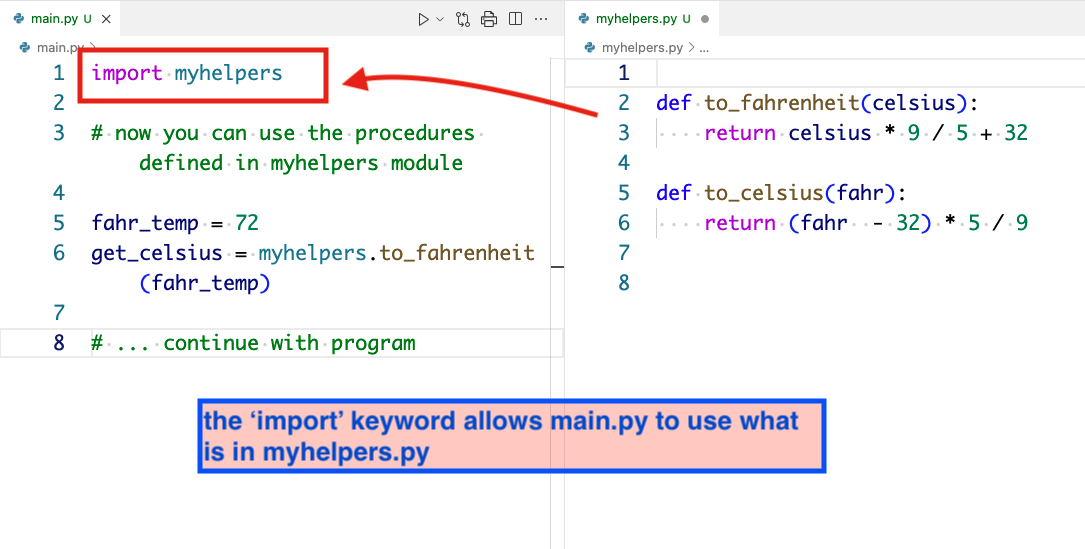Modules in Python
Modules in Python#
Before getting too far afield, it’s import to understand Python modules – because we will be importing and using them so often.
They are quite simple: they are merely Python files — i.e., files that end in .py and available to your program.
In fact, any time you create a new Python (.py) file alongside your main.py file, you’ve created a module from which you can import procedures or variables or whatever. Take a quick look at the Python docs for more. Note this excerpt:
Modules in Python
Python has a way to put definitions in a file and use them in a script or in an interactive instance of the interpreter. Such a file is called a module; definitions from a module can be imported into other modules or into the main module (the collection of variables that you have access to in a script executed at the top level and in calculator mode).
A module is a file containing Python definitions and statements. The file name is the module name with the suffix .py appended. Within a module, the module’s name (as a string) is available as the value of the global variable name.
If that sounds a little too close to gobbleygook, you’re not alone. It is always best to see a simple example. So here goes:
Below are two Python files:
main.pymyhelpers.py
The file or module myhelpers.py contains two procedures that are now available to be used (or called) in the main.py file because main.py uses the import keyword to get at those procedures, e.g.,

Note
The file into which you are importing a module need not be named
main.pyThe import example above assumes the files are in the same directory or folder — i.e., alongside each other — like so:
some-directory/
├── main.py
└── myhelpers.py
